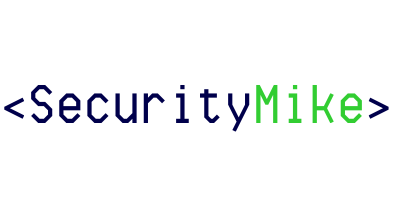In today’s digital age, cybersecurity threats have become increasingly prevalent and sophisticated. From data breaches to identity theft, individuals and organizations are constantly at risk of having their personal and sensitive information compromised. As a result, the importance of cybersecurity in protecting this information has never been more crucial.
Key Takeaways
- Cybersecurity threats are becoming increasingly prevalent in the modern world.
- Traditional password-based security systems have limitations and are not enough to protect against sophisticated attacks.
- Advanced security measures, such as biometric authentication and two-factor authentication, are needed to enhance security.
- Encryption, firewalls, and intrusion detection systems are also important tools for protecting against cyber attacks.
- Regular security audits and employee training are crucial for maintaining strong cybersecurity defenses.
The Limitations of Traditional Password-Based Security Systems
Traditional password-based security systems have long been the standard method of protecting sensitive information. These systems typically require users to create a unique password that they must enter in order to gain access to their accounts or devices. While this method may seem secure, it is not without its limitations.
One of the main weaknesses of password-based security systems is the vulnerability of passwords themselves. Many individuals use weak or easily guessable passwords, such as their birthdate or the word “password.” Additionally, passwords can be easily forgotten or lost, leading to the need for password resets or recovery processes that can be time-consuming and frustrating.
The Need for Advanced Security Measures
Given the limitations of traditional password-based security systems, it is clear that more advanced security measures are needed to protect against cyber threats. Hackers and cybercriminals are constantly evolving their tactics, making it essential for individuals and organizations to stay one step ahead.
Advanced security measures go beyond simple passwords and incorporate additional layers of protection. These measures can include biometric authentication, two-factor authentication, encryption, firewalls, intrusion detection systems, security audits, and employee training.
Biometric Authentication: The Future of Password-Free Security
Biometric authentication is a cutting-edge security measure that uses unique physical or behavioral characteristics to verify a person’s identity. This can include fingerprints, facial recognition, voice recognition, or even iris scans. By using biometric data, individuals can securely access their accounts or devices without the need for passwords.
One of the main benefits of biometric authentication is its high level of accuracy and security. Unlike passwords, which can be easily guessed or stolen, biometric data is unique to each individual and cannot be easily replicated. This makes it extremely difficult for hackers to gain unauthorized access to sensitive information.
Two-Factor Authentication: Adding an Extra Layer of Protection
Two-factor authentication (2FA) is another advanced security measure that adds an extra layer of protection to password-based systems. With 2FA, users are required to provide two forms of identification in order to access their accounts or devices. This typically involves something the user knows (such as a password) and something the user has (such as a mobile device).
The benefits of 2FA are twofold. First, it provides an additional layer of security by requiring users to provide two forms of identification. Even if a hacker manages to obtain a user’s password, they would still need access to the second form of identification in order to gain unauthorized access. Second, 2FA can provide users with peace of mind, knowing that their accounts are protected by an extra layer of security.
Encryption: Keeping Data Safe from Hackers

Encryption is a method of encoding data so that it can only be accessed by authorized individuals. It involves using complex algorithms to scramble data into unreadable text, which can only be deciphered with the correct encryption key.
The benefits of encryption are clear when it comes to protecting sensitive data. Even if a hacker manages to gain access to encrypted data, they would not be able to read or use it without the encryption key. This makes encryption an essential security measure for protecting personal and sensitive information.
Firewalls and Intrusion Detection Systems: Protecting Networks from Cyber Attacks
Firewalls and intrusion detection systems (IDS) are essential security measures for protecting networks from cyber attacks. A firewall acts as a barrier between a trusted internal network and an untrusted external network, monitoring and controlling incoming and outgoing network traffic. An IDS, on the other hand, detects and alerts administrators to potential security breaches or unauthorized access attempts.
The benefits of firewalls and IDS are evident in their ability to prevent unauthorized access to networks and detect potential threats. By monitoring network traffic and analyzing patterns, these security measures can identify and block suspicious activity, protecting sensitive data from falling into the wrong hands.
Security Audits: Assessing and Improving Security Measures
Security audits are an important part of maintaining effective cybersecurity measures. These audits involve assessing an organization’s security systems and processes to identify any vulnerabilities or weaknesses. By conducting regular security audits, organizations can proactively identify and address potential security risks before they are exploited by hackers.
The benefits of security audits are twofold. First, they provide organizations with a comprehensive understanding of their current security posture, allowing them to identify any areas that may need improvement. Second, security audits can help organizations stay compliant with industry regulations and standards, ensuring that they are meeting the necessary security requirements.
Employee Training: The Importance of Cybersecurity Education
One of the most overlooked aspects of cybersecurity is employee training. Many cyber attacks are successful because of human error or lack of awareness. By providing employees with proper cybersecurity education and training, organizations can significantly reduce the risk of a successful cyber attack.
The benefits of cybersecurity education for employees are numerous. First, it helps employees understand the importance of cybersecurity and their role in protecting sensitive information. Second, it provides employees with the knowledge and skills necessary to identify and respond to potential threats. Finally, cybersecurity education can help create a culture of security within an organization, where employees are actively engaged in protecting sensitive information.
The Role of Government and Industry in Cybersecurity Defense
Cybersecurity is not just the responsibility of individuals and organizations; it is also the responsibility of governments and industries. Governments play a crucial role in establishing regulations and standards for cybersecurity, as well as providing resources and support to combat cyber threats. Industries, on the other hand, have a responsibility to implement and maintain effective cybersecurity measures to protect their customers and stakeholders.
Collaboration between government and industry is essential in protecting against cyber threats. By working together, they can share information, resources, and best practices to enhance cybersecurity defenses. This collaboration can also help establish a unified approach to cybersecurity, ensuring that all parties are working towards a common goal of protecting sensitive information.
In conclusion, cybersecurity is of utmost importance in the modern world. The limitations of traditional password-based security systems have made it necessary for individuals and organizations to implement advanced security measures. Biometric authentication, two-factor authentication, encryption, firewalls, intrusion detection systems, security audits, and employee training are all essential components of a comprehensive cybersecurity strategy.
It is crucial for individuals and organizations to take cybersecurity seriously and implement these advanced security measures. By doing so, they can protect their personal and sensitive information from cyber threats and contribute to a safer digital environment for all.
If you’re interested in exploring advanced security measures in the age of cyber warfare, you might also want to check out this related article on the hidden threat of personal AI and how it can compromise company secrets. This thought-provoking piece by Security Mike delves into the potential risks posed by personal AI devices and the steps companies can take to protect their sensitive information. To learn more, click here.
FAQs
What is cyber warfare?
Cyber warfare refers to the use of technology to launch attacks on computer systems, networks, and infrastructure with the aim of causing damage or disruption.
Why are passwords no longer enough to protect against cyber attacks?
Passwords can be easily guessed or stolen, leaving systems vulnerable to attack. Additionally, many people use the same password for multiple accounts, which can lead to widespread security breaches.
What are some advanced security measures that can be used to protect against cyber attacks?
Advanced security measures include multi-factor authentication, biometric authentication, encryption, and intrusion detection systems.
What is multi-factor authentication?
Multi-factor authentication requires users to provide two or more forms of identification before they can access a system or account. This can include a password, a fingerprint scan, or a security token.
What is biometric authentication?
Biometric authentication uses physical characteristics such as fingerprints, facial recognition, or iris scans to verify a user’s identity.
What is encryption?
Encryption is the process of converting data into a code that can only be deciphered with a key. This helps to protect sensitive information from being intercepted or stolen.
What are intrusion detection systems?
Intrusion detection systems monitor networks and systems for signs of unauthorized access or suspicious activity. They can alert administrators to potential security breaches and help to prevent attacks.

